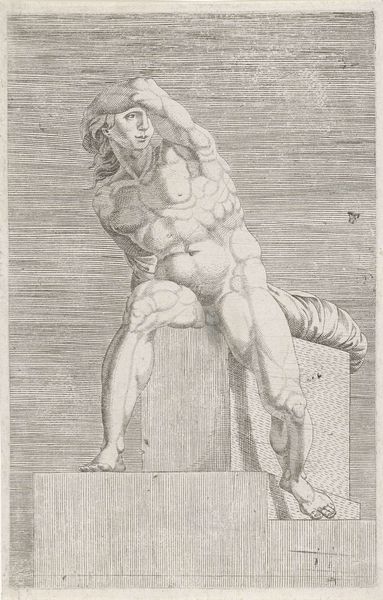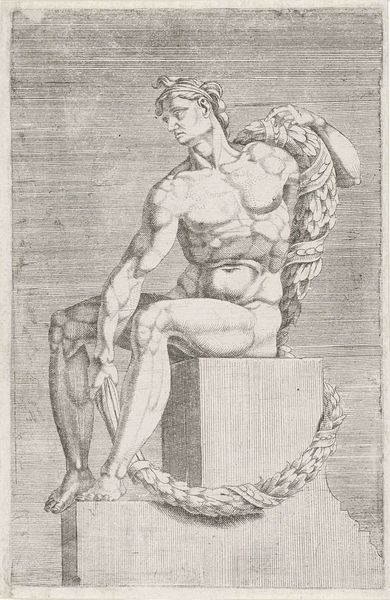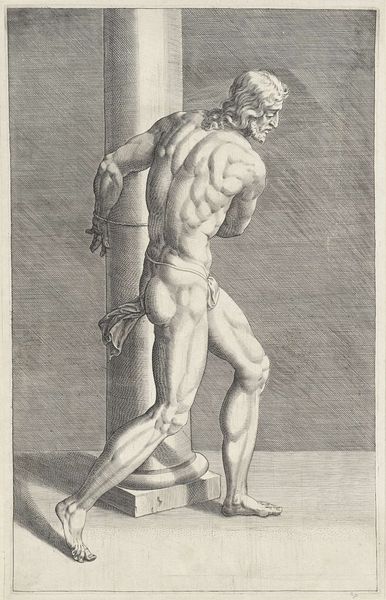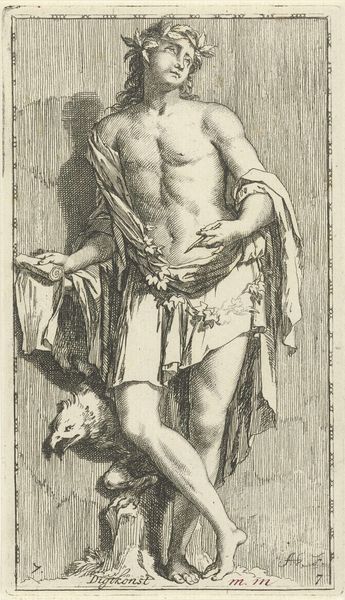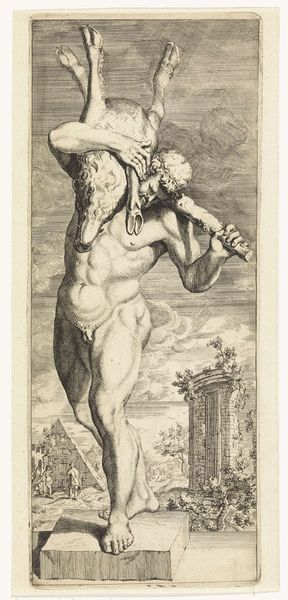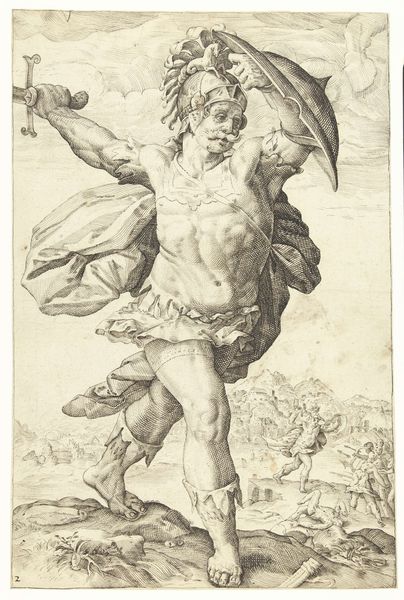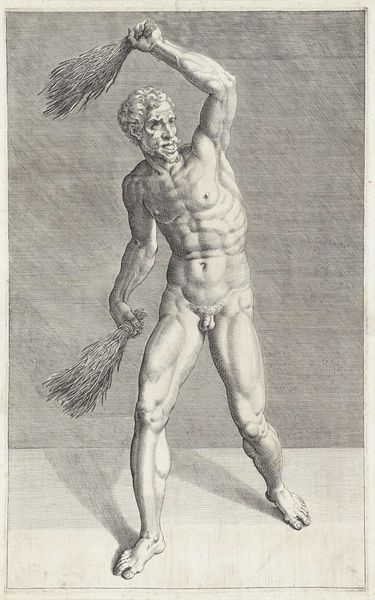
print, engraving
#
baroque
# print
#
figuration
#
history-painting
#
nude
#
engraving
Dimensions: height 447 mm, width 313 mm
Copyright: Rijks Museum: Open Domain
Jacob Matham created this engraving, "H. Sebastiaan," in the late 16th or early 17th century. During this time, the Dutch Republic was emerging, marked by religious conflicts and a burgeoning interest in classical art. Matham’s depiction of Saint Sebastian, pierced by arrows and tied to a tree, draws from both religious iconography and classical ideals of male beauty. We see a vulnerable yet idealized figure, embodying a narrative of suffering and redemption that resonated deeply in a society grappling with its own struggles for freedom. The sensuality of the piece, however, should not be overlooked as Matham paints the saint with great beauty. The original audience, in the midst of significant cultural and religious shifts, would have seen in Sebastian a figure of both religious devotion and humanistic beauty. Consider how Matham merges the sacred and the sensual, reflecting the complex interplay of religious fervor and humanistic ideals during the Dutch Golden Age.
Comments
No comments
Be the first to comment and join the conversation on the ultimate creative platform.



